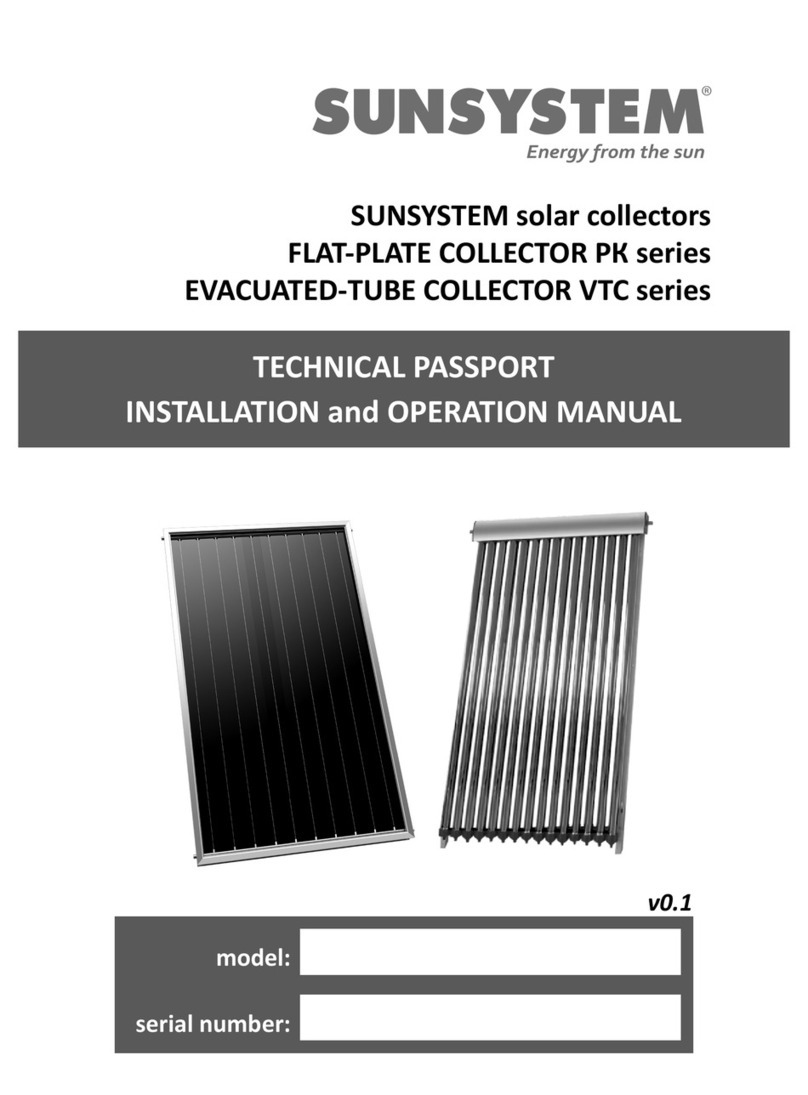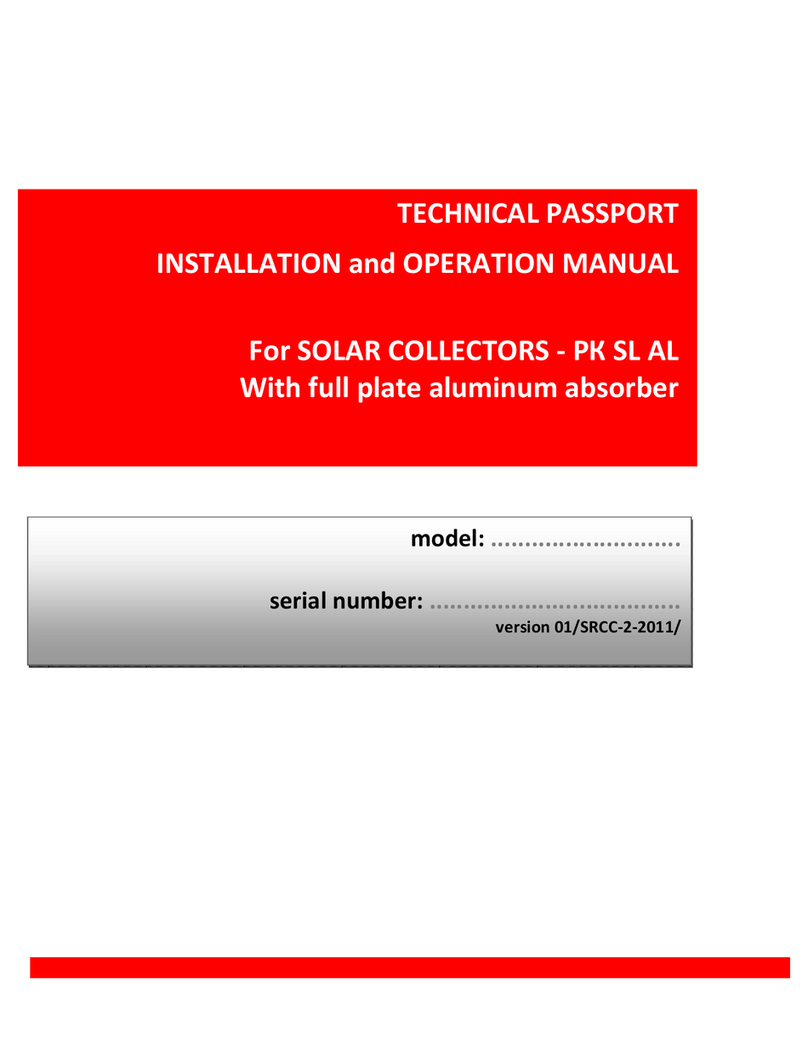
6-EN
INSTALLATION and OPERATION MANUAL
4. Packing and Transport
During transport and installation, depending on the weight, suitable safety devices should be used in
accordance with Directive 2006/42/EC. When transporting items weighing more than 30 kg, the use of
pallet jack, fork truck or other hoisting devices is a must.
We recommend transportation of collector to installation site in its packaging. Each glass tube of collector
as well as collector manifold are individually packed in separate carton boxes.
5. Delivery of collector
Inspect the integrity of the packaging upon delivery.
Check whether all components have been delivered to you.
-Check to assure that evacuated tubes are all intact and the bottom of each tube is still silver-
colored. If a tube has a white clear bottom, that means it is damaged and should be replaced. As
soon as the evacuated tubes are removed from the box, please put on the rubber tube caps, found
inside the manifold box. This will protect the bottom tip of the glass tube from breaking on impact.
-Both outlets of Manifold pipe are fit with plastic protectors. Remove inlet/outlet pipe plastic
protectors before connecting collectors to system.
-Do not take out or expose the tubes to sunlight during installation, otherwise the inner tube and
heat transfer fin will become very hot.
Delivery includes:
1) Collector.
2) Technical passport. User manual.
3) Warranty card.
If any of the above items are missing, contact your supplier.
It may be necessary to purchase bolts or other fasteners to suit the installation surface.
Delivery pack of Evacuated-tube collector VTC includes:
Diagram 4
А- Manifold - 1pcs.
В –Mounting sheet - 4 pcs.
C –Press pad –4 pcs.
D- Тube holder -15/20/30 pcs.
E- Heat conduction glue –1 pcs.
F- Front track - 2 pcs.
G- Wood screws 4 pcs.
H –Bottom track –1 pcs.
J –Bolts / Болтове– 13 pcs.
K –Silicon pad–4 pcs.
M –Heat pipe vacuum tube–15/20/30
pcs.





























